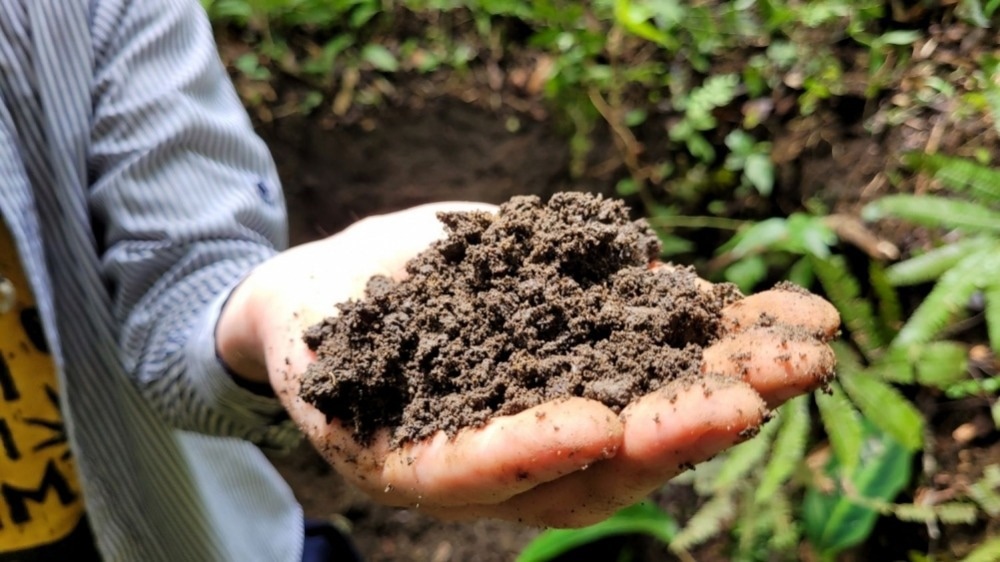Reviewed by Danielle Ellis, B.Sc.Aug 2 2023
A study published in the journal Frontiers in Soil Science asserts that a type of soil known as terra preta da Amazônia, or Amazon dark earth (ADE), encourages quicker growth of trees and improves their development in terms of quality.
 Brazilian scientists analyzed the typical soil composition resulting from native management with the aim of developing biotech applications for more effective restoration of degraded areas. Image Credit: Luís Felipe Zagatto/CENA-USP
Brazilian scientists analyzed the typical soil composition resulting from native management with the aim of developing biotech applications for more effective restoration of degraded areas. Image Credit: Luís Felipe Zagatto/CENA-USP
The research described in the study was funded by FAPESP as part of its Biodiversity, Characterization, Conservation, Restoration and Sustainable Use Program (BIOTA) under the projects 20/08927-0, 18/19000-4, and 14/50320-4.
ADE is rich in nutrients and supports communities of microorganisms that help plants grow, among other things. Native people of the Amazon have used ADE to grow food for centuries and don’t need fertilizer for plants.”
Luís Felipe Guandalin Zagatto, Study Author and Student, Center for Nuclear Energy in Agriculture, University of São Paulo
The microbiota (bacteria, archaea, fungus, and other microbes) in ADE were discovered by the researchers to be extremely advantageous to plant development. The three tree species they examined grew faster when ADE was added to the soil.
In comparison to growth in control soil, Brazilian cedarwood (Cedrela fissilis) and Yellow poinciana (Peltophorum dubium) seedlings grew to between twice and five times their usual height in soil with 20% ADE, and three to six times in soil with 100% ADE. In control soil (soil without ADE), ambay pumpwood (Cecropia pachystachya) did not grow at all, but it thrived in soil with 100% ADE.
When compared to control soil, the dry mass of Brachiaria forage grass rose by more than a factor of three in soil with 20% ADE and by more than an order of magnitude in soil with 100% ADE.
The bacteria in ADE convert certain molecules in the soil into substances that can be absorbed by plants. Using a very rudimentary analogy, you could say the bacteria act as miniature ‘chefs’ by transforming substances that can’t be ‘digested’ by plants into substances they can profitably metabolize.”
Anderson Santos de Freitas, Study First Author and PhD Candidate, Center for Nuclear Energy in Agriculture, University of São Paulo
ADE had higher levels of nutrients than the control soil, such as 30 times more phosphorus and three to five times more of all other nutrients except manganese. Its pH was greater as well.
In the state of Amazonas, in the Caldeiro Experimental Field, Zagatto and colleagues gathered samples of ADE. The control soil was obtained from experimental croplands in Piracicaba, So Paulo state, which is managed by the Luiz de Queiroz College of Agriculture (ESALQ-USP).
Control soil, a 4:1 blend of control soil and ADE, and 100% ADE were each used in a third of the pots. They sowed Brachiaria forage grass seeds (Urochloa brizantha) and allowed them to flourish for 60 days in each container to resemble a pasture. To simulate the regeneration of a damaged pasture, they clipped the grass but left the roots in place. They then planted seeds of the three different tree types.
Biotech Applications
Zagatto clarified that since ADE is a limited resource and is tightly safeguarded, the group does not advocate using it in this manner. The goal of their investigation is to examine the chemical qualities of ADE (nutrients, organic matter, pH, enzyme activity, and other biological and biochemical elements that are advantageous to plants).
“We need to understand exactly which microorganisms are responsible for these effects, and how we can use them without requiring ADE as such. We can then try, for example, to replicate these characteristics by means of biotech developments. This study was a first step in that direction,” Zagatto added.
Deforestation is a major issue in Brazil, and not just in the Amazon. There are various reasons for this, such as the replacement of forests by pasture or agriculture. It is becoming increasingly necessary to develop strategies to quickly restore these regions so that the forest can regenerate and ecosystem services can continue, with all of the advantages they provide to the environment and human populations, including as climate and air quality control and carbon storage in the soil.
Zagatto concluded, “In the study, we set out to evaluate a possible driver of improvement for tropical forest ecological restoration projects, more specifically in the Amazon, so that in future these areas can return as near as possible to their original state.”
Source:
Journal reference:
de Freitas, A. S., et al. (2023). Amazonian dark earths enhance the establishment of tree species in forest ecological restoration. Frontiers in Soil Science. doi.org/10.3389/fsoil.2023.1161627